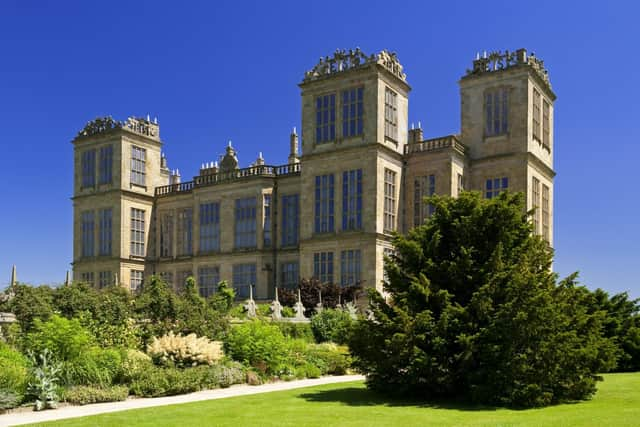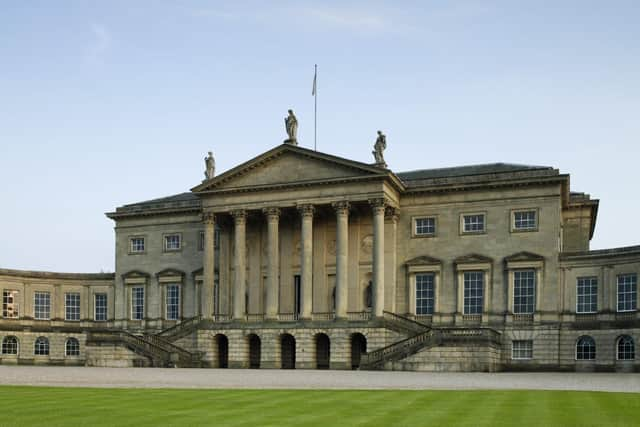Derbyshire country house and a mansion feature in new book on remarkable buildings
This article contains affiliate links. We may earn a small commission on items purchased through this article, but that does not affect our editorial judgement.
and live on Freeview channel 276
Hardwick Hall and Kedleston Hall feature in the National Trust publication covering 60 properties for which the charity is custodian.
TV presenter George Clarke has written the introduction to 60 Remarkable Buildings of the National Trust. He says: “I absolutely love the National Trust and that love grew to another level when I decided at the age of 12 to become an architect. So, this introduction is the perfect opportunity for me to personally thank the National Trust for bringing so much joy to my life.
Advertisement
Hide AdAdvertisement
Hide Ad"It is a fantastic organisation and without the Trust we would have lost so much of our architectural heritage and picturesque landscape, so it is vital we do everything we can to support it.”


Hardwick Hall is described in the book as one of the architectural megastars of the National Trust, a masterpiece of Elizabethan design. The rhyme “Hardwick Hall, more window than wall” is testament to a building that reflects the wealth (at a time when glass was incredibly expensive) and prominence of its owner, Bess of Hardwick.
The 18th century brought a new flourish to architecture in England with privileged young men returning from grand tours sharing the influences of Italian architect Andrea Palladio. This brought about a flood of Neo-classicism to country houses such as Kedleston Hall. The opulent vaulted dome in the saloon at Kedleston Hall was inspired by Rome’s Pantheon built in 120 AD by Emperor Hadrian.
Urban and rural, industrial and domestic and places of spirituality and faith are among the variety of properties featured in 60 Remarkable Buildings of the National Trust. The buildings speak of wealth, poverty and human endeavour and are a record of changing ways of life, social division and political and religious struggles.
Advertisement
Hide AdAdvertisement
Hide AdPacked with information about architectural periods, styles and influences, the book also provides fresh insights into the work of the UK’s ground-breaking historic architects and the people who commissioned them.


Senior national curator Dr Elizabeth Green, who wrote 60 Remarkable Buildings of the National Trust, said: “The National Trust was established in 1895, with the principal purpose to protect outdoor spaces at a time when city air was thick with pollution and access to green space was limited. However, by the mid-20th century owners of ancestral houses and estates experienced soaring death duties and following two world wars the huge loss of workforce saw large numbers of country houses falling into disrepair. As a result, families were forced to sell their art, heirlooms and land.
“The National Trust Acts of 1937 and 1939 enabled the charity to take on estates and open them to the public, thereby returning the benefit to the nation and bringing a halt to the disintegration of this important part of our heritage.
“Today, the trust’s focus is on addressing the challenges presented to our buildings, landscapes and habitats by climate change, and on ensuring that the places in its care contribute to the wellbeing of all.”
Advertisement
Hide AdAdvertisement
Hide Ad60 Remarkable Buildings of the National Trust costs £10 (additional charge for postage) and is available online via https://shop.nationaltrust.org.uk/60-remarkable-buildings-of-the-national-trust.html